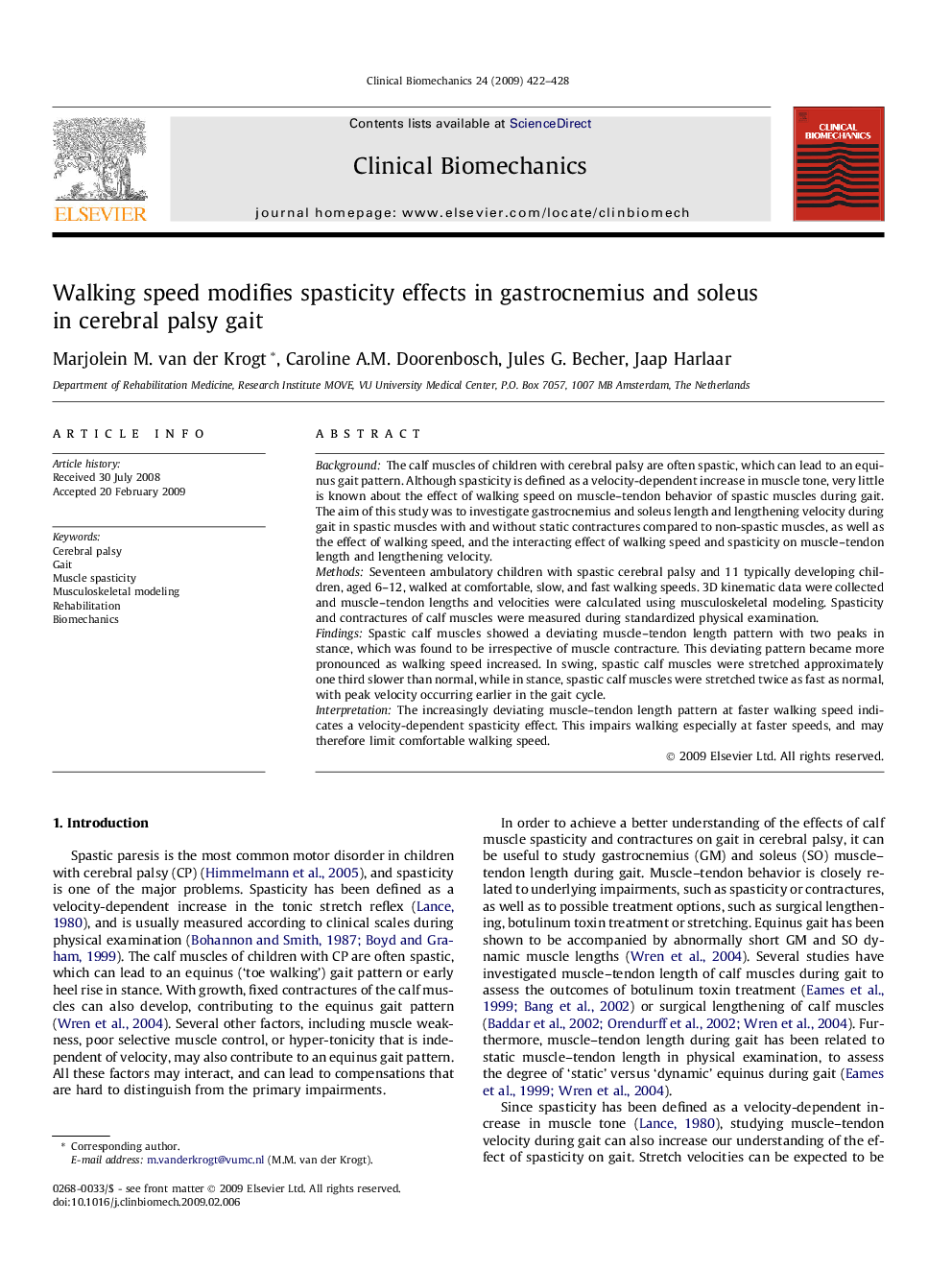| Article ID | Journal | Published Year | Pages | File Type |
|---|---|---|---|---|
| 4051330 | Clinical Biomechanics | 2009 | 7 Pages |
BackgroundThe calf muscles of children with cerebral palsy are often spastic, which can lead to an equinus gait pattern. Although spasticity is defined as a velocity-dependent increase in muscle tone, very little is known about the effect of walking speed on muscle–tendon behavior of spastic muscles during gait. The aim of this study was to investigate gastrocnemius and soleus length and lengthening velocity during gait in spastic muscles with and without static contractures compared to non-spastic muscles, as well as the effect of walking speed, and the interacting effect of walking speed and spasticity on muscle–tendon length and lengthening velocity.MethodsSeventeen ambulatory children with spastic cerebral palsy and 11 typically developing children, aged 6–12, walked at comfortable, slow, and fast walking speeds. 3D kinematic data were collected and muscle–tendon lengths and velocities were calculated using musculoskeletal modeling. Spasticity and contractures of calf muscles were measured during standardized physical examination.FindingsSpastic calf muscles showed a deviating muscle–tendon length pattern with two peaks in stance, which was found to be irrespective of muscle contracture. This deviating pattern became more pronounced as walking speed increased. In swing, spastic calf muscles were stretched approximately one third slower than normal, while in stance, spastic calf muscles were stretched twice as fast as normal, with peak velocity occurring earlier in the gait cycle.InterpretationThe increasingly deviating muscle–tendon length pattern at faster walking speed indicates a velocity-dependent spasticity effect. This impairs walking especially at faster speeds, and may therefore limit comfortable walking speed.
